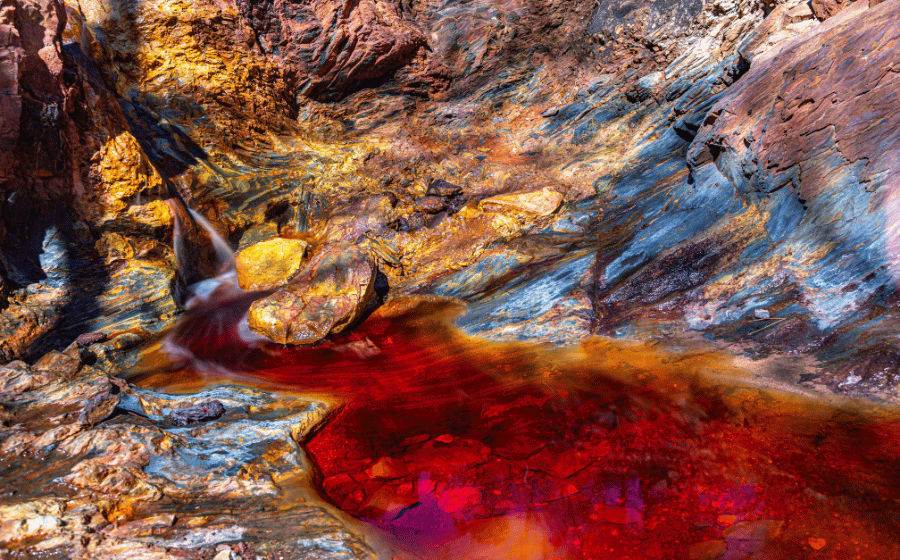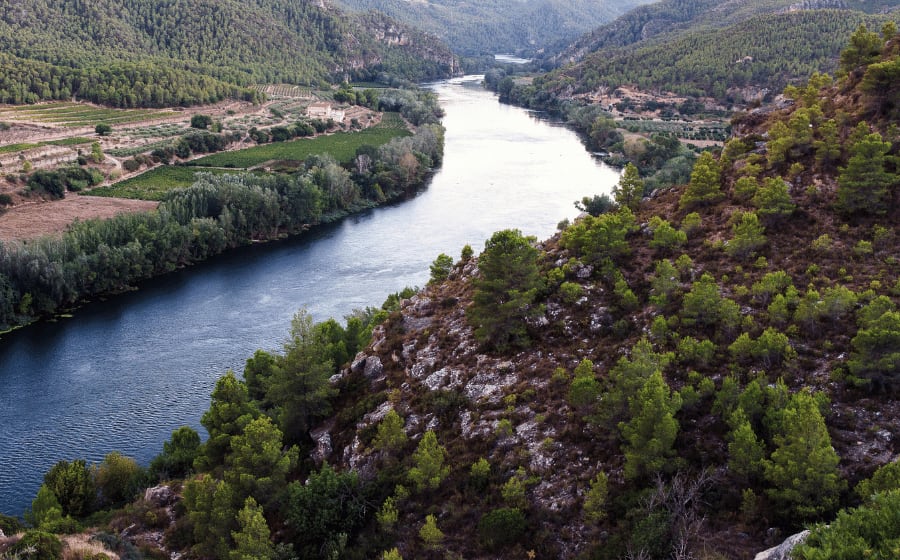7 Great Lakes in Spain To See in Your Next Visit (with Map!)
December 8, 2022
Win a FREE Trip to Spain!
Exciting Announcement! For the first time, we're thrilled to offer exclusive trips to the heart of Spain - an experience like no other. This isn't your typical tourist journey; it's a unique opportunity to immerse yourself in authentic Spanish culture, alongside real locals and our passionate team.
But there's more! Simply by requesting information about this amazing trip, you'll be entered into a special draw to win a Fully Paid Trip to Spain for Two. And that's not all - everyone who inquires will receive an exclusive bonus gift, valued at $500, available only now.
Ready to Discover the Real Spain?Click Here ↑ to Request Information & Enter the Draw!
Where are you looking for alternative activities when visiting Spain? If you are a nature-type person, and lakes are your thing, continue reading!
Don’t worry… I am not sending you to a no-mans-land. All the lakes in this list are 1) gorgeous, 2) full of activities, and 3) did I already say gorgeous?
In this article, I will share everything you need to know about Spain’s seven most fantastic lakes, plus a map!
So, with no further a do, let’s get to it!
Table of Contents ▼ ▶
1. Sanabria Lake
Depth: 53 meters
Surface: 369 hectares
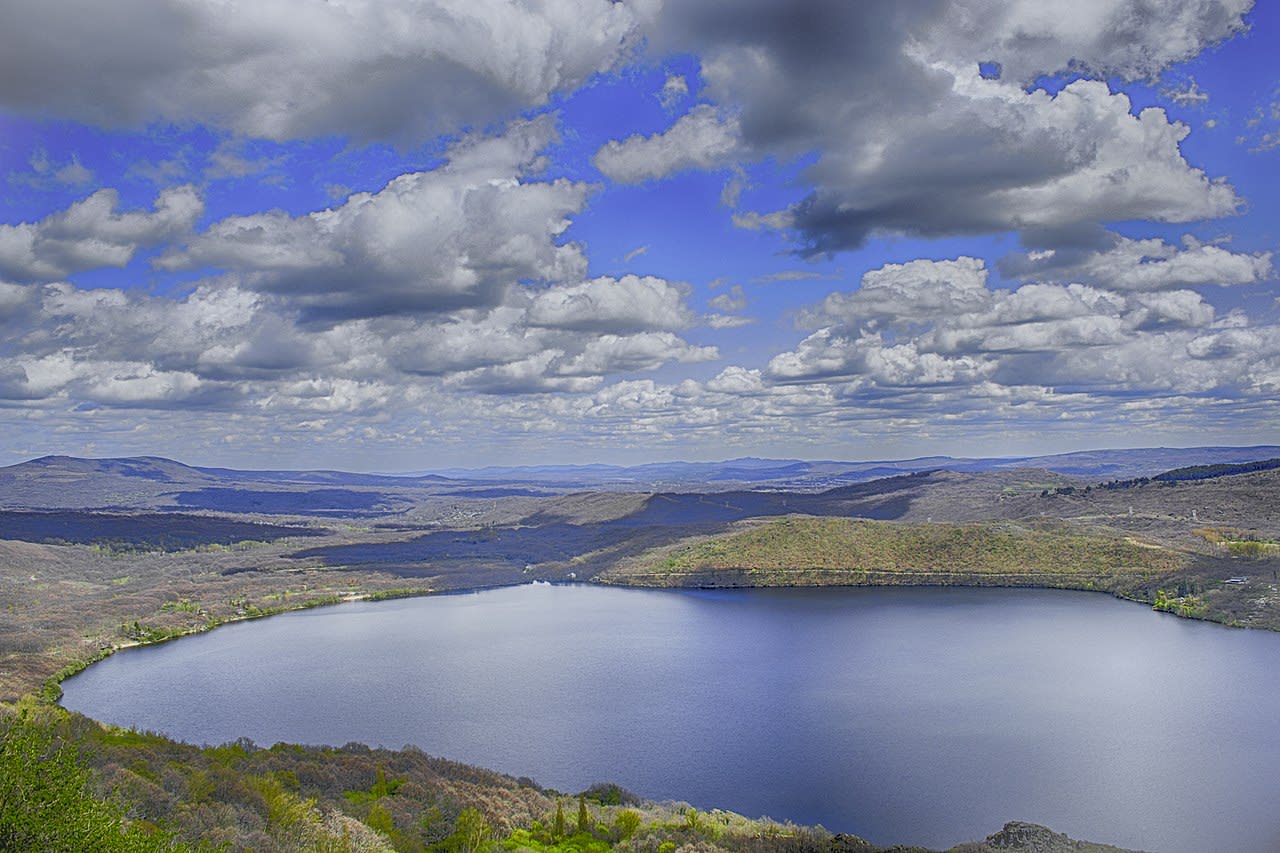
I know you are here for the activities, but let us know some basic information about this natural beauty.
Where is Sanabria Lake located? It’s located in the community of Castile and Leon in the municipality of Galende, one of the most visited in Zamora. It is a lake of glacial origin, which makes its waters very clear and clean, suitable for the best bathing.
To understand the origin of everything, we have to go back about 100,000 years ago, in the Upper Pleistocene. An impressive glacier with ice tongues of more than 20 km long served as the origin of the current Lake Sanabria.
Are you familiar with the legend of the Loch Ness Monster? I think every lake hides its secret; what would be of them without legends?
This lake has many popular legends; one of the most famous ones is the lake’s origin in the town of Valverde de Lucerna. On the night of San Juan, a pilgrim appeared asking for shelter, but all the inhabitants refused him except one family. The pilgrim confessed that he was Jesus Christ and that he had come to see if the inhabitants of that town were as selfish as was said. To punish this behavior, it is said that the city was flooded with the waters that today form Lake Sanabria. It’s said that truly charitable people can hear the old church’s bell on Saint John’s Day.
Did you know that the Sanabria Lake is the largest natural lake in the Iberian Peninsula and one of the largest in Europe (being the largest of glacial origin).
Now, let’s get to the fun part!
If you come to this lake, it’s impossible to get bored! You have thousands of leisure activities, such as hiking, fishing, renting pedal boats, canoeing, or camping. Well, the last activity only do it at the campsite that is available for that purpose. These are only a few! You can also have fun with water activities like windsurfing, sailing, and even scuba diving.
On the other hand, if you want some relaxation time, Sanabria Lake is also the right place to go! The lake has several sand and stone beaches with beautiful trees and nature, a perfect place to disconnect. For some years now, the lake has also had a catamaran route. This catamaran has a camera that allows you to see the interior of the lake while doing the sightseeing tour. Likewise, very close to Sanabria, you will find the picturesque spa of Bouzas.
Is impossible to get bored here! A perfect destination for a weekend getaway!
2. Banyoles Lake
Depth: 46 meters
Surface: 112 hectares

Did you know that kayaking is one of the most popular sports practiced in Banyoles Lake? What is even more interesting is that it was prepared for the rowing events of the 1992 Olympic Games hosted by Barcelona. But will get into more details on activities later!
The Banyoles Lake is 120 km from Barcelona and 22 km from Girona, which makes it an ideal option to combine the lake in the morning and a city tour in the afternoon. The lake can reach 400 meters deep in some areas!! It is fed by aquifers from the north and west, in Alta Garrotxa, north of Girona.
Banyoles Lake hosts a spectacular phenomenon: a free show on behalf of nature. The lake is a great place to sit and watch the colors change depending on the sun’s position. The hue of the water can vary from green to lilac from sunrise to sunset, transforming the whole spirit of the place.
Now, we can move on to the activities!
In this lake, you can do many different activities and swim (although it’s only allowed in three designated areas). The lake can also be navigated! Hiking enthusiasts can also take advantage of their visit. It’s very common to do the track around the lake. It’s a 7km path with no difficulty, and those who want to take it easy will find many areas where they can stop to rest and enjoy the scenery. You must visit the fishermen’s quarries, built between the late 19th and 20th centuries. What are the fishermen’s quarries? They are small buildings whose primary function is to store fishing gear.
Terrace of the Old Baths It is a perfect option for lunch.
3. The Pink Lake of Torrevieja
Depth: 1,50 meters
Surface: 1.400 hectares

Sometimes it is not necessary to go to the other side of the world to find (and photograph!) the most impressive landscapes. If you are in Spain, you must know that the Pink Lake of Torrevieja or Sea Lake is one of those places. It’s an incredible pink lake, the best time of the year to visit it is at the end of summer in August or September when the pink is the most intense. However, the color will also depend on the time of the day and the weather since the lagoon reflects the sky.
But is there another reason for the pinkish color? It’s very easy to understand, it’s a phenomenon of natural origin, produced by a bacterium that releases a pinkish pigment in waters with a high concentration of salt. This lake holds 350 grams per liter of water, similar to the Dead Sea. The pink lagoon is our continent’s most productive salt lagoon, since 800.000 tons of salt are extracted annually and exported to northern Europe and the United States for industrial purposes!!
But… there is some bad news!
As appetizing as it may seem, it is forbidden to swim. Bathing is not allowed for environmental reasons, to ensure the quality of the lake ecosystems, but also for safety reasons. You can’t swim, but you can do other activities. Many routes on foot or by bicycle will recommend you to the Interpretation Center of the Natural Park. You can see flamingos or birds such as herons or ospreys in your path.
The place is 30 minutes from Santa Pola and very close to the community of Murcia in Torrevieja. I recommend you take the Torrevieja tourist train that explains the characteristics of the salt flats, flora and fauna, and the origin of its pink color.
4. Rius Lake and Tort de Rius Lake
Tort de Rius Lake
Depth: 25 meters
Surface: 40 hectares
Rius Lake
Depth: Unkown
Surface: 13 hectares

You might be wondering where are this lakes located? And it’s in Catalonia. To be more specific, in Lérida, particularly in the Aran Valley.
This is a lake of glacial origin located at 2310 meters altitude in the municipality of Alto Aran in the region of Valle de Aran. Near the lake of Rius is the Tort de Rius lake. Its waters feed the river or the River de Valarties that joins the Garona river in the town of Arties.
Rius lake and Tort de Rius Lake are famous for their tracking trail. It’s a 9.2 km loop trail near Vielha e Mijaran, Lleida. Usually, for most people is considered a challenging route. It takes around 5 hours to complete it. This is a popular trail for hiking, but you can still enjoy some solitude during quieter times of the day. The path is open all year and is beautiful to visit anytime. The classic starting point to begin your route is the Conangles hut. If you have a dog, you can bring it here, but it must be on a leash!
5. St. Mauritius Lake
Depth: 40 meters
Surface: 114.119 hectares
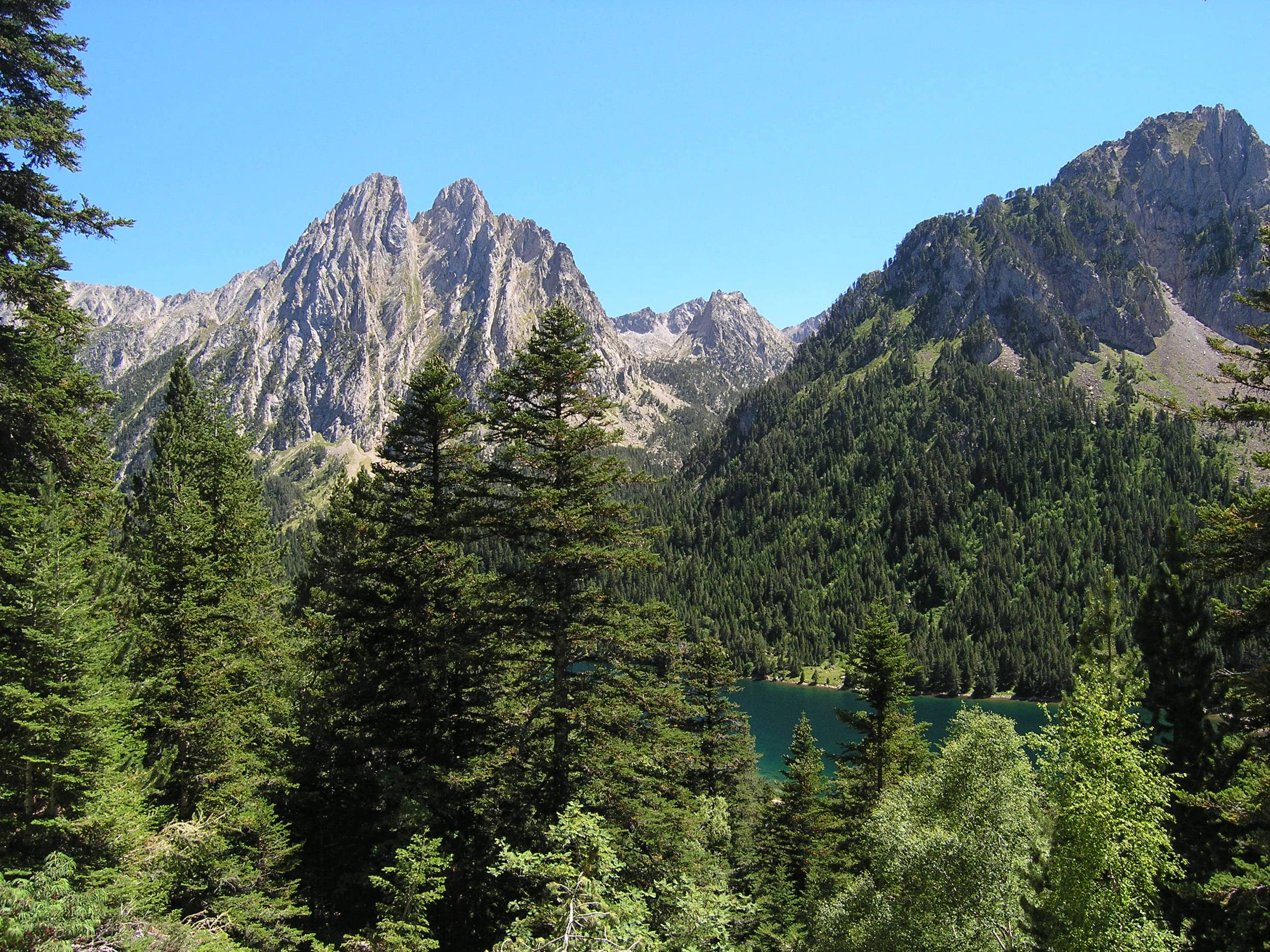
Where is this gorgeous lake of San Mauricio located? It’s located in the National Park of Aiguas Tortas and Lake San Mauricio in Lleida, Spain. St. Maurice Lake it’s located in the peaks of “Los Encantados,” which symbolizes a place of recreation for the inhabitants of the area and the visitors.
People who go to this lake find this Pyrenean lake a haven of peace and rest among black pine forests. Located at an altitude of 1,910 m, this Pyrenean lake receives the waters and torrents of Ratera, Subenuix, and Portarró and is located at the bottom of a glacial cirque.
The National Park, where the lake is, has up to 80 more lakes and is the 8 largest national park in Spain in terms of the number of visitors. Its surroundings are the perfect place to see fauna and flora of all kinds. In fact, in this place, there are species of plants that are very difficult to find or can only be seen in this park.
Hop on the cableway! You can see it all from the air with the cableway connecting Gento Lake with the Sallente reservoir.
Okay… activity time!
Whether it’s winter or summer, you have thousands of activities in St. Mauritius lake. During the winter, you can ski, snowshoe, and, of course, do snowball battles! With the excellent weather, you can enjoy long walks, climbing, cycling, or hiking in the summer. In fact, there are the well-known “Chariots of Fire” routes in this park, which circularly runs around the entire park. And if you are more into learning, in Lake St. Maurice, and around the park, several villages offer all kinds of cultural activities related to the park, designed for children.
6. Enol Lake
Depth: 25 meters
Surface: 80.000 m2

Asturias never stops calling the attention of visitors. It’s considered by many the most charming region in Spain and the ideal place to visit if you want to connect with nature. An excellent place where you can connect with nature is Lake Enol, the largest of the three lakes of Covadonga and the first lake we will find when we go up. A perfect place to go for a walk, take pictures and relax!
The Enol Lake comes from a glacial origin, located in the National Park of Los Picos de Europa, corresponding to the Principality of Asturias, specifically in the Eastern Massif.
The lake is emerald green and darker in summer than in winter. Its depth allows for thermal stratification of the water during the summer and part of the fall, forming three layers in the water mass: a warmer and less dense upper layer, an intermediate layer, in which the temperature drops rapidly with depth, and finally the third layer of colder and denser waters that are located in the most profound areas. At the end of autumn, the thermal stratification disappears, and the waters of the three layers mix.
I’m sure you don’t know what I am about to tell you! Since the seventies, there has been a submerged carving of the Virgin of Covadonga in the lake. This carving is taken in procession every year on the 8th of September to represent the day of Asturias.
And just as a warning… keep your eyes very open! Because several witnesses claimed to have seen a giant shadow under the water of Lake Enol, giving rise to comparisons with the myth of Loch Ness.
7. Embalse de Los Bermejales
Depth: 100 meters
Surface: 5,62 km
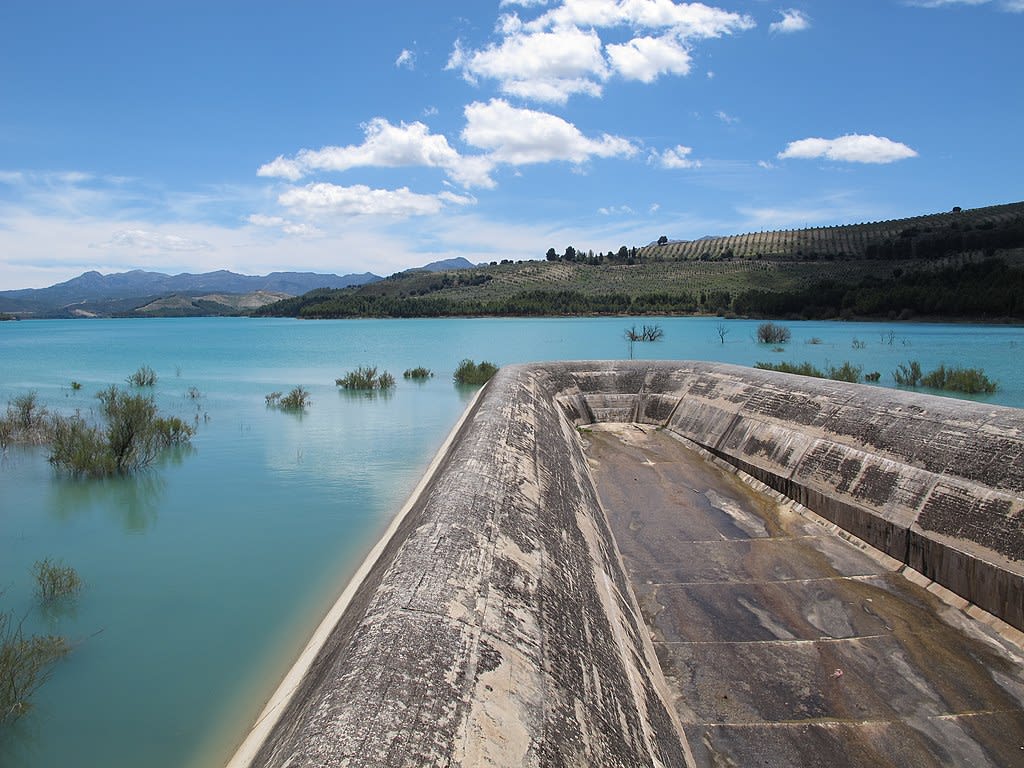
Dams are significant for mankind; their fundamental mission is to regulate the waters of rivers for their better use in water supply and irrigation. They also generate electricity and can prevent major floods. The reservoir or dam of Los Bermejales is one of the four points of the interior of the province of Granada, where bathing, nautical sports activities, and fishing are allowed. You can also practice other leisure activities such as paddle surfing, guided bike route, canyoning, rafting, kayaking, and paragliding.
And where can you find the Embalse de Los Bermejales?
The Bermejales reservoir is located in the upper course of the river Cacín, where the waters from the Sierra de Almijara and Tejeda converge.
It belongs to the municipality of Arenas del Rey, in the province of Granada, the autonomous community of Andalusia. Although the 20th century was when work began on the Bermejales Reservoir, it was much earlier when the need to build a dam arose. Let’s travel in time to understand where this idea occurred. It was Don Julio Quesada Cañaveral y Piédrola, who in the late 19th began to implement the project of a dam to provide water for irrigation of their land. The dam’s construction had to stop during the Civil War, and it was finally finished in 1952.
We can observe different aquatic birds in their natural environment and the beautiful contrast between the farm fields, olive groves, and the forest that make up the almost centenary pines next to the road. I invite you to visit and observe all the beauties that Bermejales has stored for you.
Map of the great lakes in Spain!
If you are the type of person that needs a balance between big cities and nature, this article has you covered! With this list of great lakes in Sapin, you can escape the city whenever needed!
Don’t forget to save or share this list. It can help you create a digital box of ideas for your next trip!



